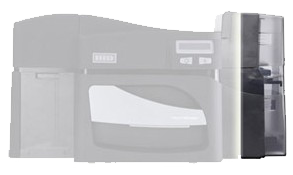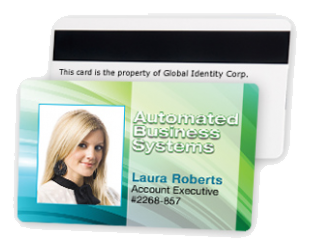How to choose the best printer for your needs
Printing your ID badges, visitor passes, and membership cards in-house has great benefits – from added control and convenience to overall cost savings. But with so many choices and options available, how do you know which card printer is right for you? Before you begin to shop, read our top seven mistakes to avoid when buying an ID card printer. Sometimes knowing what NOT to do is just as important as knowing what TO do!
MISTAKE 1: Buy a printer based on price alon
We know your budget is important, but make sure you get a printer that will do the work your job requires. While an entry-level printer might be better on your budget now, printing a large quantity of cards on a low volume printer will overextend the machine, likely resulting in expensive repairs down the road.
Talk with your ID professional about what your cards need to do for you, including:
- How much information needs to be printed on your cards
- Will your cards need to store data in a mag stripe or smart chip?
- How many cards you expect to print
![]() Start with equipment that best fits your needs to maximize your long-term investment and get the most out of your ID card program.
Start with equipment that best fits your needs to maximize your long-term investment and get the most out of your ID card program.
MISTAKE 2: Choose a printer that can’t keep up with you
 Some printer models are better equipped to print larger volumes of cards than others. If you know you’ll be printing a high volume of cards, make sure your printer is up to the task.
Some printer models are better equipped to print larger volumes of cards than others. If you know you’ll be printing a high volume of cards, make sure your printer is up to the task.
![]() One feature to look for in higher volume printers is the card capacity of its input and output hoppers.
One feature to look for in higher volume printers is the card capacity of its input and output hoppers.
Printers made for higher volume printing will generally have larger capacity ribbons and card hoppers, meaning you’ll spend less time refilling supplies and more time printing.
MISTAKE 3: Think only about your immediate needs
Before choosing a printer, consider the future goals for your ID card program.
- Will you use your cards for door access or time & attendance tracking in the future?
- What about printing on both sides of your cards rather than only one side?
- Will you consider laminating your cards for added durability or to extend the life of your cards?
![]()
If you know you’ll be expanding your card functionality in the future, choose a printer that can be easily upgraded.
Some card printers only require a special ribbon to upgrade to dual-sided printing. Other upgrades, like lamination, are available as “plug-and-play” modules. Talk to your ID Professional about upgrade options before you invest in a printer.
MISTAKE 4: Plan to print dual-sided cards with a single-sided printer
 Can you print on one side of the card and manually flip your cards to print on the other side? Sure, but it’s not recommended.
Can you print on one side of the card and manually flip your cards to print on the other side? Sure, but it’s not recommended.
Dirty hands, dust, debris, and even fingerprints can distort the images that are printed on the cards and, worse yet, damage the printhead. Printhead replacement can be very costly; new printheads typically cost several hundred dollars and may not be covered under a manufacturer’s warranty if damaged due to improper care.
![]() Plan ahead, prevent costly repairs, and purchase a printer that can print on both sides of the card. It will lead to a longer life of the printer, save you time, and create less stress in the long run.
Plan ahead, prevent costly repairs, and purchase a printer that can print on both sides of the card. It will lead to a longer life of the printer, save you time, and create less stress in the long run.
MISTAKE 5: Don’t consider card durability & quality
An average PVC card will last 3-5 years. If it is swiped through a magnetic stripe reader or exposed to the sun, its life is typically much shorter. There are two ways to extend the life of your cards:
- Laminate your cards. In plastic card printing, lamination is a clear protective layer that is applied over the top of your card by a printer with lamination capability.
- Print cards with a retransfer printer. Retransfer technology prints the image to a film that is heat rolled to the card surface resulting in a more durable print (with the added benefit of vibrant, over-the-edge printing).
MISTAKE 6: Buy a printer that can’t handle your security needs
 While a retail membership card may not need to be very secure, an access card into a police department requires high security. Your security needs may require a specialized ID card printer.
While a retail membership card may not need to be very secure, an access card into a police department requires high security. Your security needs may require a specialized ID card printer.
A variety of visual security features can be added to cards. Some features can be added regardless of the type of printer you own, such as hand-applied peel-and-stick holographic seals.
Other security features require a special printer. For example, holographic laminate requires a laminating printer. To prevent unauthorized use, some printers offer password protection and locked access to cards and ribbons.
![]() Secure your card printing program by investing in a printer that will protect your data and hardware.
Secure your card printing program by investing in a printer that will protect your data and hardware.
MISTAKE 7: Forget to plan ahead for emergencies
Technology has certainly simplified our lives, but we also need to be prepared for the day it doesn’t work as it should. Even if you properly maintain your ID card printer, as the saying goes, nothing lasts forever.
Service programs offer peace of mind. Typically a full-service program costs a little more than half the cost of a backup printer and covers the cost of all repairs. Plus, they’re much cheaper than purchasing a backup printer. If you would be in a pinch without your printer for a week or two, you should also consider adding loaner coverage to reduce downtime.
BONUS MISTAKE! Choose a company that doesn’t offer technical support
ID card printers are specialized products. Make sure you work with a company that can help you if you have problems. Not all companies support the items they sell. Some companies will refer you to the manufacturer when you have issues which can be a hassle. Choose a company that offers in-house training and support so that you have easy access to expert advice when you need it.
Take these common mistakes into consideration to ensure you choose the best ID card printer for your current and future needs. You can also lean on the ID Professionals at ID Wholesaler. We ask the right questions to get to know you and your needs before we make recommendations. With this, you can be confident that you’ve made a wise investment.
